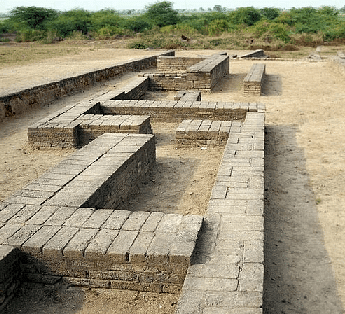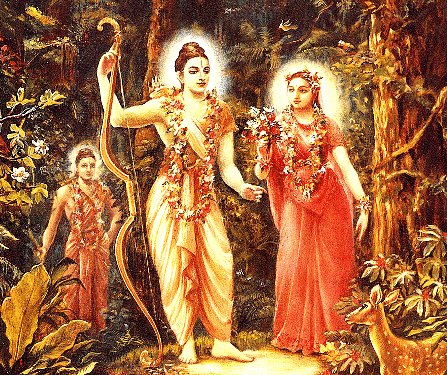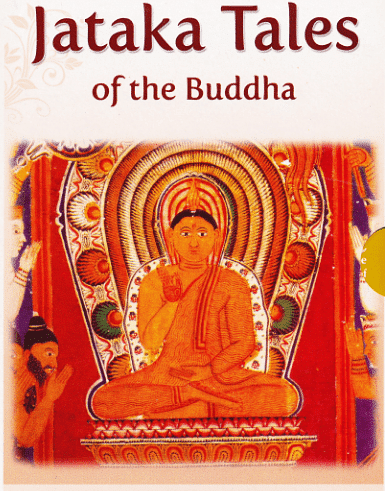BPSC (Bihar) Exam > BPSC (Bihar) Notes > Revision Notes: Indus Valley Civilization- 2
Revision Notes: Indus Valley Civilization- 2 - BPSC (Bihar) PDF Download
| Table of contents |

|
| Lothal |

|
| Types of Marriage in the Vedic Period |

|
| Decline |

|
| Facts To Be Remembered |

|
Lothal
The word Lothal, like Mohenjo-daro, means the mound of the dead. Lothal is located between the Bhogavo and Sabarmati rivers near the Gulf of Khambhat in Gujarat.
- This is situated on the bank of Bhogavar.
- Only at Lothal and Rangpur, rice husks have been found.
 The Excavated Site at Lothal
The Excavated Site at Lothal
- The use of weights and measures proves that they knew arithmetic as well which is shown by a scale found at Lothal.
- On the eastern side is located a dockyard and wharf loading platform.
- A doubtful terracotta figurine of a horse is found here.
- The worship of fire is proved by the discovery of fire altars at Lothal, Kalibangan, and Mohenjodaro.
- The pre-Harappan settlement has been found at:
(i) Kot Diji
(ii) Kalibangan
(iii) Harappa. - Four outposts of the Harappan Civilisation are Manda in the north, Damimabad in the South, Hulas, and Alamgirpur in the east, and Suktagendor in the west.
- The Harappan Civilisation roughly extended over an area of 1.3 million sq. km.
- The spread of the Harappan Civilisation is coterminous with the wheat-producing zone.
- Feature of the coastal towns of the Harappan Civilisation:
(i) To exploit locally available raw materials (shell, minerals, etc.);
(ii) To act as ports for the Gulf region;
(iii) To act as an entrepot of trade and commerce for the inland towns. - Harappans had a highly skilled knowledge of metallurgy which is proved by the mixture of copper and tin in ideal proportion for bronze implements.
- The latest Harappan site discovered in Gujarat is Dholavira.
- The two most thickly populated cities of the Harappan civilization were Mohenjodaro and Harappa.
- Harappan ports:
(i) Lothal
(ii) Balakot
(iii) and Suktagendor etc. - Station of Harappan cattle breeders—Nadi.
- Wheeler pointed out some kind of military assault or mass execution of the Harappan people on the basis of skeletons found at Mohenjodaro.
- The Harappan fortifications were meant to
(i) Defend the townships from strong attacks by enemies;
(ii) Protect the town from floods;
(iii) Serve as safety measures from robbers. - Harappan people had the closest external contacts with Mesopotamia.
- The entry port for trade between the Indus trading centers and Mesapotomia was Bahrain.
- The script has not been deciphered so far, but overlaps of letters on some of the potsherds from Kalibangan show that writing was boustrophedon or from right to left and from left to right in alternative lines.
- The chief deity was the Mahadeva. In a seal, he is surrounded by four animals—elephant, tiger, rhino, and buffalo, and two deer at his feet.
- There was great progress in ceramic art, plastic art, and metal sculpture.
- The seals might be considered the first art objects in India.
- The icon in Indian art appears in Harappan culture for the first time on a famous seal from Mohenjodaro.
Question for Revision Notes: Indus Valley Civilization- 2Try yourself:The latest Harappan site discovered in ________
View Solution
Imports
- Gold—From South India, Afghanistan, and Persia.
- Silver—Afghanistan, and Iran
- Copper—South India, Baluchistan, and Arabia.
Question for Revision Notes: Indus Valley Civilization- 2Try yourself:The chief deity was the Mahadeva. In a seal, he is surrounded by four animals. Which one is not one of them?
View Solution
Types of Marriage in the Vedic Period
- Brahma: Marriage of a duly cowered girl to a man of the same class.
- Daiva: In this type of marriage, the father gives a daughter to a sacrificial priest as part of his fee.
- Arsa: In this type of marriage, a token bride-price of a cow and a bull is given in place of the dowry.
- Prajapati: The father gives the girl without dowry and without demanding the bride-price.
- Gandharva: Marriage by the consent of the two parties, which might be solemnized merely by plighting troth.
- Asura: Asura marriage, in which the bride was bought from her father, was looked upon with disfavor by all the sacred texts, though the Arthashastra allows it without criticism.
- Rakshasa: Rakshasa marriage, or marriage by capture, was practiced especially by warriors.
- Paishacha: It was the seduction of the girl while asleep, mentally deranged or drunk.
- Of these eight forms: The first four were generally approved and were permissible to Brahmans. The other forms were looked on with varying degrees of disfavours by the pious. Gandharva marriage, which often might amount to no more than a liaison, was surprisingly respected. A special form of the Gandharva marriage was the Swaymvar or “self-choice”.
 Prajapatya
Prajapatya
- Lapis Lazuli—Badakshan
- Turquoise—Iran
- Amethyst—Maharastra
- Agate—Saurastra and Western India.
- Jade—Central Asia
- Cronch-Shells—Saurashtra and the Deccan.
- Three methods of disposing of the dead:
(i) Complete burial.
(ii) Burial after exposure of the body to birds and beasts.
(iii) Cremation followed by burial of the ashes.Question for Revision Notes: Indus Valley Civilization- 2Try yourself:Marriage by the consent of the two parties, which might be solemnized merely by plighting troth is called ______.View Solution
Decline
- Aryan Invasion: Reference to the destruction of forts by Aryans in the Rig Veda.
- Geographical Occurences: Recurring floods e.g. Mohenjodaro and Chanhudaro, drying up of rivers e.g., Kalibangan and Bhansali.
Weaknesses of the Harappans
- Lack of plasticity of mind.
- Difficulty in obtaining raw materials particularly copper and tin.
- Limited use of scripts as compared to the Sumerians.
Gradual Process of Decline
- The decline of trade, Precarious economic situation, Ineffective Harappan administration.
Facts To Be Remembered
- Wheat and barley were the earliest cereals grown by man.
- The growing of grains made possible the transition from the Paleolithic to the Neolithic age.
- The main occupation of the Paleolithic people was hunting and gathering food.
- The Indus Valley Civilization type was found in Sumer.
- The paintings of Ajanta depict stories of the Jatakas.
- Purushasukta is found in the Rigveda.
- Milindapanha is a religious conversation.
- The Uttaramerur inscription belongs to the period of Prantaka I.
- The first coins circulated in Bihar and U.P. in India.
- From the twelfth year of his reign, Ashoka began to issue edicts.
- The earliest evidence of the practice of sati can be gleaned from an inscription at Eran in M.P. dated 510 A.D.
- The neolithic period is known as the food-producing stage.
- Though the fire was discovered in the Palaeolithic age, its use for cooking was started in the Neolithic age.
- Allahabad Pillar Inscription is the Prasasti written by Harisena on Samudragupta.
- Strata Sutra deals with religious sacrifices.
- The emotional poetry of the Saiva saints of South India was called Tevram (also known as Dravida Veda).
- Ashoka introduced the institution of ‘dhamma-mahamatta’ in the major rock edict-V.
- The capital of Kanvas was at Pataliputra.
- Tamil is the oldest among the spoken literary languages of South India.
- In the Vedic age, widows could remarry.
- Maski's edict mentions the personal name of Ashoka.
- Jatakas are stories relating to the different births of Buddha.

- Matsya is identified with modern Jaipur and included Alwar and a part of Bharatpur.
- Asokan inscriptions may be considered the first written record in India.
- Bhagavad Gita was originally written in Sanskrit.
- Kautilya’s Arthashastra is compared to Machiavelli’s Prince.
- The most sacred book of the Buddhists is the Tripitaka.
- Pallavas created the Mahabalipuram, rock temples.
- The philosophy of Vishishtadvaita is associated with Ramanuja.
- Vedanta philosophy spread during the period of the Guptas.
- The most popular god of the Tamil people was Murugan.
- The chief impact of Vedic culture on Indian history was the consolidation of caste.
- The salient feature of the Rigvedic religion was the worship of the Mother Goddess.
- The major difference between varna and jati is that varna is only four but jati are many.
- The Brahmanas are books that deal with rituals.
- Sankaracharya founded four maths in four corners of India.
- The famous dialogue between Nachiketa and Yama is mentioned in the Kathopanishad.
Question for Revision Notes: Indus Valley Civilization- 2Try yourself:Which inscription mentions the personal name of Ashoka?
View Solution
The document Revision Notes: Indus Valley Civilization- 2 - BPSC (Bihar) is a part of BPSC (Bihar) category.
All you need of BPSC (Bihar) at this link: BPSC (Bihar)
Download as PDF

|
Explore Courses for BPSC (Bihar) exam
|

|
Signup for Free!
Signup to see your scores go up within 7 days! Learn & Practice with 1000+ FREE Notes, Videos & Tests.
Related Searches




















